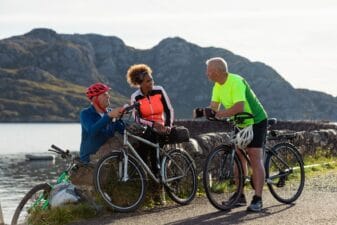Inflation is rising, and interest rates are likely to follow. That’s because unlike other political problems, there’s only one solution to high inflation — making borrowing more expensive. But this could cause a crash. Here’s why.
Multiple inflationary factors
The labour shortage is causing wages to rise, while the supply chain crisis is simultaneously causing supply to fall. Raw material price increases are now hitting basic goods like food. Kraft Heinz CEO Miguel Patricio said yesterday that inflation was “across the board“, and that, “we are raising prices, where necessary, around the world“. As economies have restarted, production has not been able to keep up with increased demand.
The ongoing petrol shortage is a good example of inflation in action. There’s far higher demand than during the pandemic, but not enough petrol being delivered to cope. This has led to petrol prices increasing. Oil prices are also now at historic highs, and these price increases will soon feed back to consumer goods. The gas shortage has sent multiple smaller suppliers to the wall. Meanwhile, the largest energy suppliers are now losing money from the gas they’re selling. When the price cap rises again in April, so will everybody’s bills. Far from being transitory, it appears to me that inflation is here to stay.
Passive income stocks: our picks
Do you like the idea of dividend income?
The prospect of investing in a company just once, then sitting back and watching as it potentially pays a dividend out over and over?
If you’re excited by the thought of regular passive income payments, as well as the potential for significant growth on your initial investment…
Then we think you’ll want to see this report inside Motley Fool Share Advisor — ‘5 Essential Stocks For Passive Income Seekers’.
What’s more, today we’re giving away one of these stock picks, absolutely free!
Inflation and interest rates explained
The Bank of England’s annual inflation target is 2%. That means that a product that costs £1 now will cost £1.02 a year from now. This incentivises consumers to spend money, which helps to grow GDP. If inflation falls below this target, demand falls as well, because the incentive to spend is removed. If it rises too high, disposable income becomes less valuable, so consumers buy less.
This is how I see the relationship between inflation and interest rates:
| Low inflation | High inflation | |
| Low growth | Lower interest rates | Danger Zone |
| High growth | Do nothing | Raise interest rates |
The UK is currently in the danger zone. With low growth and high inflation, there’s only two possible scenarios going forward. Either the BoE raises interest rates, which could permanently damage our economic recovery by slowing growth. Or, it lets inflation continue to rise, allowing a cost of living crisis to unfold.
The high debt trap
Bank of England MPC member Michael Saunders said yesterday that “markets have priced in over the last few months an earlier rise in Bank rate than previously…I think it is appropriate that the markets have moved to pricing a significantly earlier path of tightening than they did previously”. I think this means that interest rates are likely to rise very soon.
This would increase the cost of business debt accumulated during the pandemic. It would also increase the interest due on the UK’s £2trn national debt. For individuals, there will be more interest due on mortgages, credit cards, and loans. Combined with a national insurance rise, council tax rise, and frozen income tax bands, I think next year could see a massive fall in disposable income. This would hit spending hard.
Any company with high debt levels is in danger. It’ll soon be paying higher interest, while also coping with falling consumer demand. Going forward, I’m sticking to blue chip companies with low debt and a proven business model.








